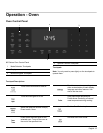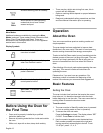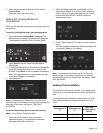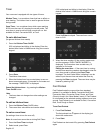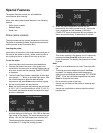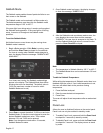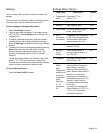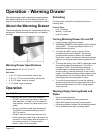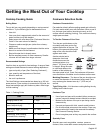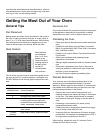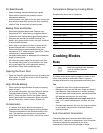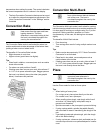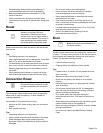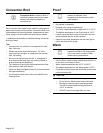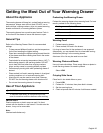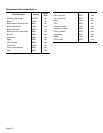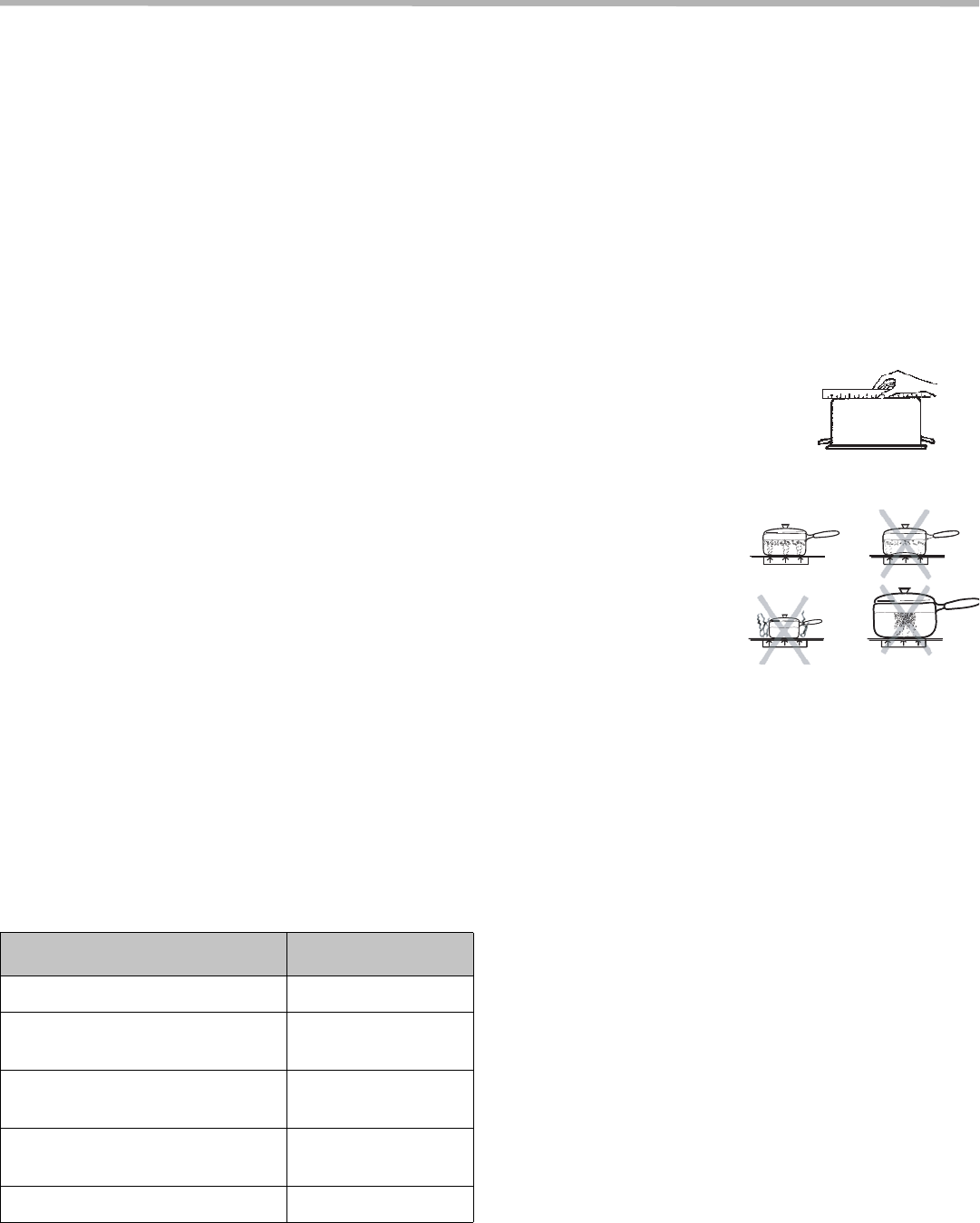
English 20
Getting the Most Out of Your Cooktop
Cooktop Cooking Guide
Boiling Water
Time to boil can vary greatly depending on environmental
conditions. Try the following tips to decrease boil time:
• Use a lid.
• Use a pan that is appropriately sized for the amount of
water and the size of the element.
• Select a pan with a flat base (See “Cookware Selection
Guide” in the next column for details).
• Choose a medium-weight pan (rather than a heavy-
weight one).
• Make sure that the pan is positioned so that the entire
base is in contact with the element.
• Start with water that is already warm.
• Boil the smallest amount of water necessary. Smaller
volumes will boil faster than larger volumes.
Recommended Settings
Use this chart as a guide for heat settings. A range of heat
settings are listed because the actual setting depends on:
• type and quality of pan (See “Selecting Cookware”),
• type, quantity and temperature of the food,
• element used and
• the cook’s preference.
The Heat Settings recommended are based on a 240 volt
power source. If your cooktop is connected to 208 volts, the
same heat settings apply but foods may take a little longer
to finish cooking.
Cookware Selection Guide
Cookware Characteristics
Pan selection directly affects cooking speed and uniformity.
For best results select pans with flat bases. When a pan is
hot, the base (pan bottom) should rest evenly on the
surface without wobbling (rocking). Flat, medium-to-heavy-
weight pans are best.
To Test the Flatness of Your Pans
Turn the pan upside down on the
countertop and place a ruler flat
against the bottom of the pan. The
bottom of the pan and the straight
edge of the ruler should be flush
against each other.
Another simple test to
determine even heat
distribution across the
cookware bottom is to
place 1” (25.4 mm) of water
in the pan. Bring the water
to a boil and observe the
location of the bubbles as
the water starts to boil. Good, flat cookware will have an
even distribution of bubbles over the bottom surface area.
Matching Diameters – The base of the pan should cover
or match the diameter of the element being used. Pans
may overhang the element area by 1" (25.4 mm) all
around.
Tight Fitting Lids – A lid shortens cooking/boiling time by
holding heat inside the pot.
Cookware Tips
• Use of pots and pans with rounded (either concave or
convex) warped or dented bottoms should be avoided.
• Make sure the bottom of the pot or pan being used is
clean and dry.
• Use pots and pans with thick, smooth metal bottoms.
• Do not slide metal pots across the cooktop. Pans may
leave marks which need to be removed immediately.
See Care and Cleaning Section.
• Do not use glass pans as they may scratch the surface.
Specialty Pans
Specialty pans such as griddles, roasters, pressure
cookers, woks, water bath canners and pressure canners
Table 1: Cooking Guide
Uses Heat Settings
Bringing water to boil 9 - High
Pan frying, sautéing, browning
meat, deep fat frying
6-8 - Med-High
Most frying, eggs, pancakes,
slow boil
4-5 - Med
Simmering, finish cooking,
covered foods, steaming
2-3 - Med Low
Melting butter and chocolate 1 - Low



